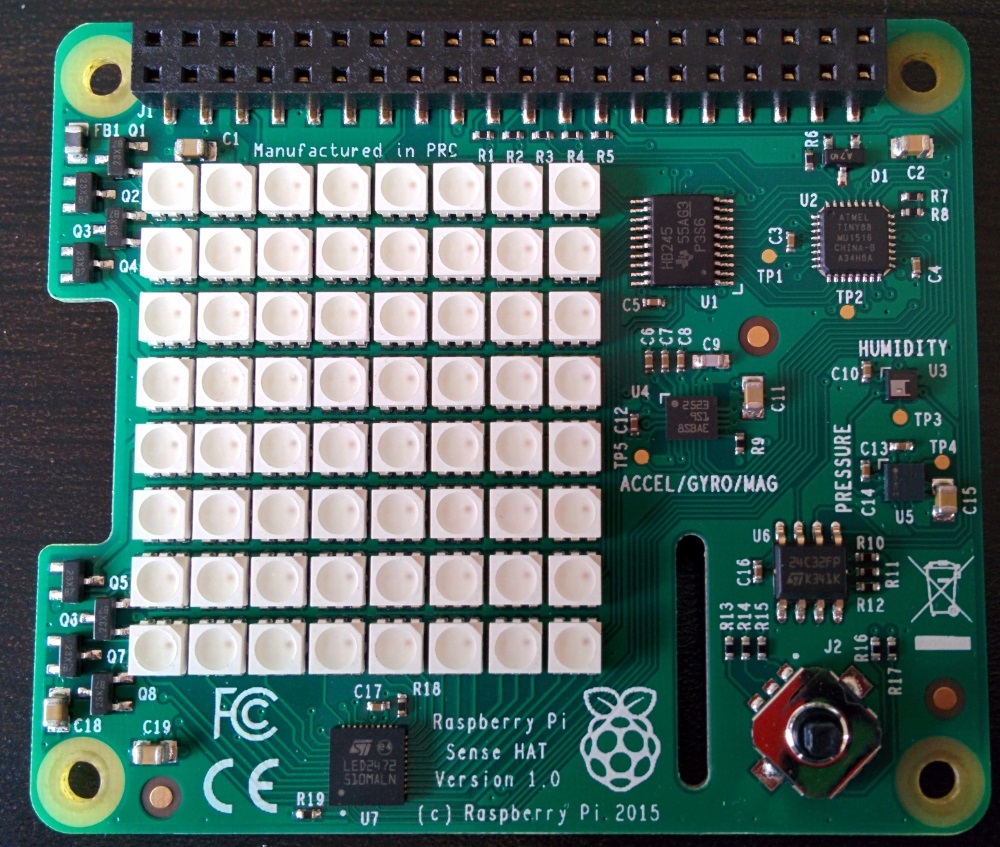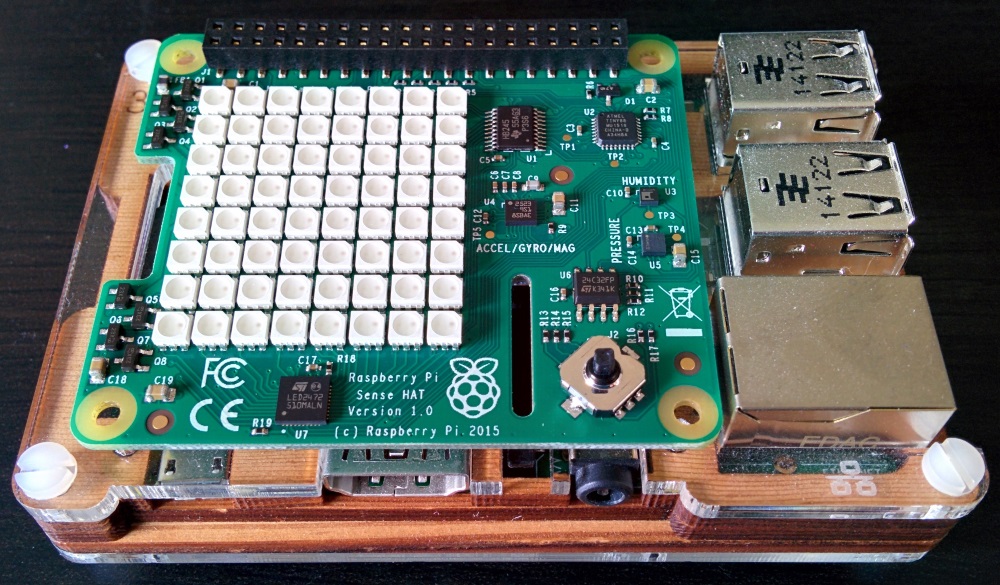I recently acquired a Sense HAT for the Raspberry Pi. This is the same hardware that will be sent in to space as part of the Astro Pi mission. Here it is.

It’s a shame that it’s made in China (PRC) and couldn’t be manufactured in Wales like the Pi is. I guess the cost is too high. Here is it installed on a wooden coupé pibow case.

It’s pretty easy to program and the API is well documented. A nice touch is that you can configure the LEDs to rotate to whichever direction you have the Pi mounted. Here is a quick demo I knocked up.

Here’s the Python code.
from sense_hat import SenseHat
sh = SenseHat()
X = [255, 0, 0] # Red
O = [0, 0, 0] # Black
pi = [
O, O, O, O, O, O, O, O,
X, X, X, X, X, X, X, X,
X, X, X, X, X, X, X, X,
O, X, X, O, O, X, X, O,
O, X, X, O, O, X, X, O,
O, X, X, O, O, X, X, O,
O, X, X, O, O, X, X, O,
O, O, O, O, O, O, O, O]
sh.set_pixels(pi)
There is a new worksheet available for making a magic 8 ball from the Sense HAT. It uses the accelerometer to detect shakes and displays a random message on the LED array.